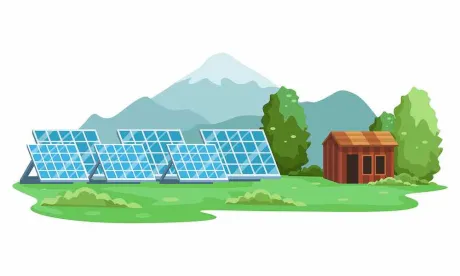There is a lot of buzz around clean technology, distributed energy resources (DERs), microgrids, and other technological innovations in the renewable energy and clean transport industries and how these developments can contribute to solving long-standing environmental justice issues. As these innovations develop, energy markets will undergo substantial changes to which consumers and industry participants alike will need to adapt and leverage. Every other week, K&L Gates’ The Energizer will highlight emerging issues or stories relating to the use of DERs, energy storage, emerging technologies, hydrogen, and other innovations driving the energy industry forward. To subscribe to The Energizer newsletter, please click here.
U.S. DEPARTMENT OF ENERGY ANNOUNCES US$600 MILLION IN FUNDING FOR ENERGY STORAGE PROJECTS AND ENERGY EFFICIENCY UPGRADES
On 14 November, the U.S. Department of Energy (DOE) announced US$349 million in funding for emerging Long-Duration Energy Storage (LDES) demonstration projects capable of delivering electricity for 10 hours or longer to support a low-cost, reliable, carbon-free electric grid. This funding opportunity seeks LDES demonstration projects that will validate new technologies, enhance the capabilities of customers and communities to integrate LDES more effectively, and have substantial engagement with local and regional stakeholders to ensure that they generate local, regional, and national benefit.
To ensure these projects create good jobs and benefits for communities, the funding announcement includes a community benefits plan from each applicant. Each plan will be evaluated against a set of four core policy priorities: investing in America’s workforce; engaging communities and labor; advancing diversity, equity, inclusion, and accessibility; and implementing the Justice40 Initiative. Letters of intent are due by 15 December 2022, and full applications are due by 3 March 2023.
On 15 November, DOE also announced US$250 million in grant funding to help states and territories establishing loan funds to invest in energy audits, energy efficiency upgrades, and retrofits of commercial and residential buildings. States and territories may use up to one-quarter of the funding for grants and technical assistance to low-income homeowners and small businesses, particularly in disadvantaged communities that have faced underinvestment in energy efficiency deployment.
NET POWER ANNOUNCES ZERO-EMISSIONS GAS PLANT IN TEXAS
On 7 November, NET Power LLC (NET Power) unveiled its plans to build the world’s first utility-scale natural gas-fired power plant with carbon capture. This project located near Odessa, Texas, is expected to generate more than 300 MW of electricity with close to zero emissions. Through its use of carbon capture, NET Power plans to trap and store close to 100% of its carbon dioxide (CO2) emissions underground without releasing other chemicals such as nitrous oxides (NOx) and sulfur oxides (SOx). The facility is expected to capture and store roughly 860,000 tonnes of CO2 per year while addressing issues NET Power has deemed critical: air quality and land use; the virtual elimination of NOx, SOx, and CO2; and the high cost of on-demand electricity production through the transportation and sequestration of carbon.
This project will be financed through a combination of NET Power’s current capitalization program, shareholder investments, and new project financing. NET Power is currently seeking support at the federal, state, and local levels with a focus on grant and loan opportunities available in the Bipartisan Infrastructure Law. A spokesperson for NET Power commented that this project was made possible in large part thanks to the Inflation Reduction Act’s provision to increase tax credits for such projects.
NET Power believes that this project will serve as a “commercial launch pad for NET Power’s core process technology, accelerating other projects already in development and providing the pathway for global deployment of this innovative decarbonization platform.” Construction of this power plant is planned to begin in the third quarter of 2024, and it is scheduled to be completed in 2026.
U.S. GOVERNMENT BLOCKS IMPORT OF SOLAR PANELS UNDER UYGHUR FORCED LABOR PROTECTION ACT
U.S. Customs and Border Protection have begun to enforce the Uyghur Forced Labor Protection Act (UFLPA) by seizing at least 1,053 shipments of solar energy equipment allegedly manufactured in China’s Xinjiang region. The UFLPA was signed into law by President Biden on 23 December 2021. The law establishes a rebuttable presumption that any goods, wares, articles, and merchandise mined, produced, or manufactured wholly or in part in the Xinjiang Uyghur Autonomous Region of the People’s Republic of China is not entitled to entry into the United States. The presumption may be rebutted with clear and convincing evidence that the goods were not produced using forced labor.
The UFLPA was enacted to pressure Beijing to reform its Uyghur detention camps in Xinjian. Most of the U.S. supply of solar panels is sourced from China, and stakeholders have raised concerns about the role of forced labor in the manufacturing process. U.S. Customs and Border Protection published UFLPA Operational Guidance to assist the trade community in addressing the rebuttable presumption created by the UFLPA.






 />i
/>i
